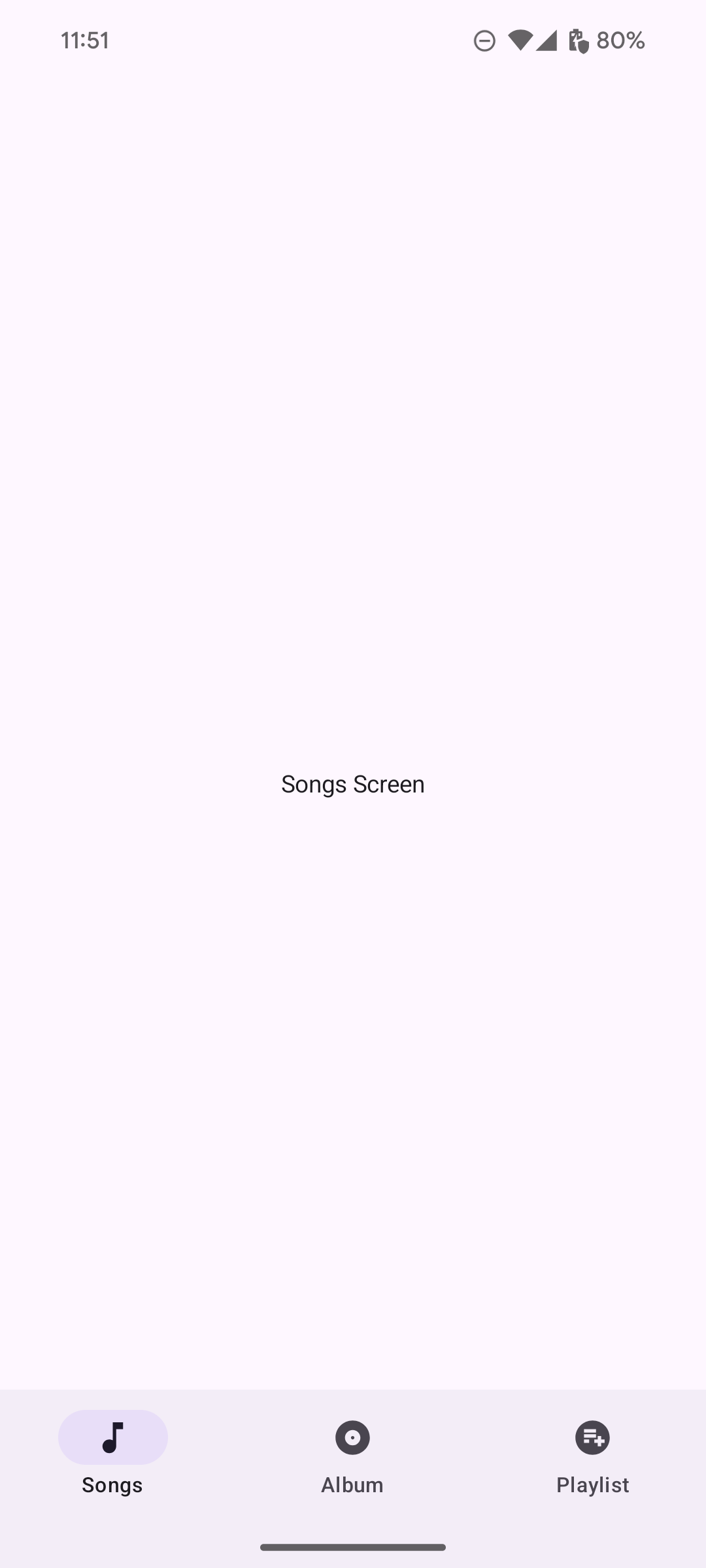نوار ناوبری به کاربران اجازه میدهد تا بین مقاصد موجود در یک برنامه جابجا شوند. شما باید از نوارهای ناوبری برای موارد زیر استفاده کنید:
- سه تا پنج مقصد با اهمیت یکسان
- اندازه پنجرههای جمع و جور
- مقاصد ثابت در سراسر صفحات برنامه

این صفحه به شما نشان میدهد که چگونه یک نوار ناوبری را در برنامه خود به همراه صفحات مرتبط و ناوبری اولیه نمایش دهید.
سطح API
از کامپوننتهای NavigationBar و NavigationBarItem برای پیادهسازی منطق تغییر مقصد استفاده کنید. هر NavigationBarItem نشاندهنده یک مقصد واحد است.
NavigationBarItem شامل پارامترهای کلیدی زیر است:
-
selected: تعیین میکند که آیا آیتم فعلی از نظر بصری هایلایت شده است یا خیر. -
onClick(): عملی را که هنگام کلیک کاربر روی آیتم باید انجام شود، تعریف میکند. منطق مدیریت رویدادهای ناوبری، بهروزرسانی وضعیت آیتم انتخابشده یا بارگذاری محتوای مربوطه در اینجا قرار دارد. -
label: متن درون آیتم را نمایش میدهد. اختیاری است. -
icon: یک آیکون درون آیتم نمایش میدهد. اختیاری است.
مثال: نوار ناوبری پایین
قطعه کد زیر یک نوار ناوبری پایین با آیتمهایی پیادهسازی میکند تا کاربران بتوانند بین صفحات مختلف در یک برنامه حرکت کنند:
@Composable fun NavigationBarExample(modifier: Modifier = Modifier) { val navController = rememberNavController() val startDestination = Destination.SONGS var selectedDestination by rememberSaveable { mutableIntStateOf(startDestination.ordinal) } Scaffold( modifier = modifier, bottomBar = { NavigationBar(windowInsets = NavigationBarDefaults.windowInsets) { Destination.entries.forEachIndexed { index, destination -> NavigationBarItem( selected = selectedDestination == index, onClick = { navController.navigate(route = destination.route) selectedDestination = index }, icon = { Icon( destination.icon, contentDescription = destination.contentDescription ) }, label = { Text(destination.label) } ) } } } ) { contentPadding -> AppNavHost(navController, startDestination, modifier = Modifier.padding(contentPadding)) } }
نکات کلیدی
-
NavigationBarمجموعهای از آیتمها را نمایش میدهد که هر آیتم مربوط به یکDestinationاست. -
val navController = rememberNavController()یک نمونه ازNavHostControllerایجاد و به خاطر میسپارد، که ناوبری را درون یکNavHostمدیریت میکند. -
var selectedDestination by rememberSaveable { mutableIntStateOf(startDestination.ordinal) }وضعیت آیتم انتخاب شده را مدیریت میکند.-
startDestination.ordinalاندیس عددی (موقعیت) ورودی شمارشیDestination.SONGSرا برمیگرداند.
-
- وقتی روی یک آیتم کلیک میشود،
navController.navigate(route = destination.route)برای پیمایش به صفحه مربوطه فراخوانی میشود. - لامبدا
onClickمربوط بهNavigationBarItemوضعیتselectedDestinationرا بهروزرسانی میکند تا آیتم کلیکشده را بهصورت بصری هایلایت کند. - منطق ناوبری
AppNavHostcomposable را فراخوانی میکند وnavControllerوstartDestinationارسال میکند تا محتوای واقعی صفحه انتخاب شده را نمایش دهد.
نتیجه
تصویر زیر نوار ناوبری حاصل از قطعه کد قبلی را نشان میدهد:


